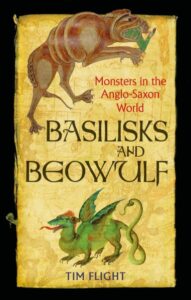 When you or I read The Hobbit, or The Dragon Riders of Pern, or even perhaps The Apocalypse of John, it’s rather unlikely that we think of the dragons depicted therein as objectively real creatures – either in the distant past or in the present (well, at least it is for me). That’s because in our post-modern world, we divide the things we can prove or at least think can be proven from those that we deem to exist exclusively in human imagination. However for those living in the British Isles a millennium ago – give or take a few centuries – such creatures as dragons were unquestionably as real as the person sitting next to you in the mead hall.
When you or I read The Hobbit, or The Dragon Riders of Pern, or even perhaps The Apocalypse of John, it’s rather unlikely that we think of the dragons depicted therein as objectively real creatures – either in the distant past or in the present (well, at least it is for me). That’s because in our post-modern world, we divide the things we can prove or at least think can be proven from those that we deem to exist exclusively in human imagination. However for those living in the British Isles a millennium ago – give or take a few centuries – such creatures as dragons were unquestionably as real as the person sitting next to you in the mead hall.
In his recently published Basilisks and Beowulf, Monsters in the Anglo-Saxon World, Dr. Tim Flight explores how the Anglo-Saxons understood dragons, basilisks, and demons, as well as other “monsters” such as wolves, whales, and the infamous Grendelkin of Beowulf to exist in the very real world, as well as how the absolute conviction of the factual reality of them helped to structure the Anglo-Saxon understanding of the natural world and human-kind’s place in it.
Weaving deftly in and out of a number of subjects ranging from literature and etymology to socio-political and natural history, this lively book should find a wide range of readers who will be quickly and thoroughly captivated after only a few pages. And if you’re concerned that your recollection of Beowulf is perhaps a bit too – shall we say – rusty to follow a detailed discussion of the poem and works contemporary to it, fear not; Dr. Flight does a superb job of guiding his readers through all they need to know about these matters to make the book both enjoyable and informative.
